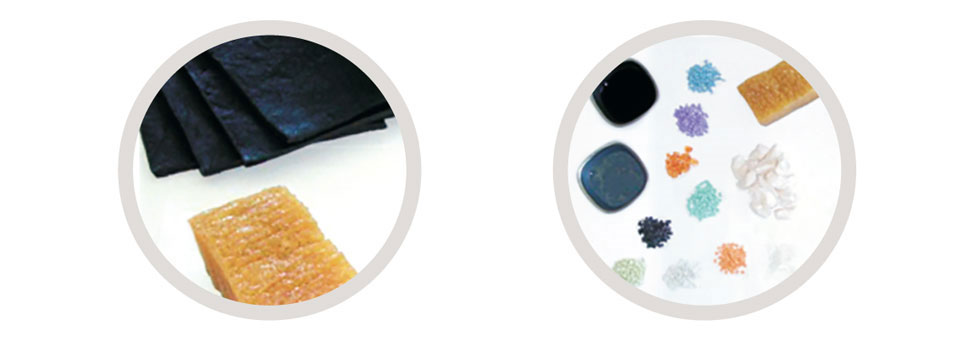Rubber is a very flexible and elastic material with a high restoring force. In the technical application this material is officially named elastomer.
The raw materials are natural or synthetic elastomers. A rubber mixture contains different additives. Through addition of heat, rubber becomes vulcanised. This process enables the elasticity of rubber.
Deformation within the elastic range can be repeated limitless times without the change of the initial shape. As soon as the deformation forces are released, the elastomer returns back into its initial shape.
Elastomers are resistant against many acids, leaches and aromatic hydrocarbons which appear in the private, public and industrial sewage. For the sealing technology it is important to estimate this resistance, knowing the conditions of the joint such as the concentration of the medium, temperature, pressure as well as the static and dynamic strains.
The ideal elastomer material which is resistant to all gases and fluids does not exist yet. It is necessary to select the material which is the most suitable to meet the requirements demanded.
The most common elastomer types used in the sewage technology are EPDM, SBR, NBR, NR, IIR and IR which all meet the current standards, such as DIN 4060 and DIN EN 681.
The following listed values are for guidance only. The values and characteristics cannot generally be transferred to all operating conditions.
| PROPERTIES | EPDM | SBR | NBR | NR | FKM |
| Ozone Resistance | 1 | 4 | 4 | 4 | 2 |
| Oil Resistance | 4 | 5 | 2 | 6 | 1 |
| Fuel Resistance | 5 | 6 | 2 | 6 | 1 |
| Acid Resistance | 1 | 3 | 4 | 3 | 1 |
| Leach Resistance | 1 | 3 | 4 | 3 | 1 |
| Gas Permeability | 4 | 4 | 2 | 5 | 2 |
| Electric Resistance | 2 | 2 | 5 | 1 | 2 |
| Rebound Resilience | 3 | 3 | 3 | 2 | 3 |
| Tear Strength | 3 | 2 | 2 | 1 | 2 |
| Temperature Resistance | -40° to + 120°C | -40° to + 80°C | -30° to + 100°C | -40° to + 80°C | -40° to + 200°C |
| Temporary max. Temperature | + 160°C | + 130°C | + 130°C | + 130°C | + 230°C |
1 = excellent 2 = good 3 = befriedigendsatisfactory 4 = sufficient 5 = poor 6 = fail
SHORT DISCRIPTION OF CAOUTCHOUC TYPES
EPDM (Ethylene – Propylene – Diene – Monomer)
Contains extraordinary resistance to oxygen, ozone and further atmospheric influences. UV-light resistant.
SBR (Styrene Butadiene Rubber)
One of the major synthetic rubbers with similar properties as natural rubber (NR). Compared to NR the abrasion resistance of SBR is superior but with an associated deterioration of the elasticity.
NBR (Acrylonitrile Butadiene Rubber)
The basis for NBR is a mixture of acrylonitrile and butadiene. The higher the acryl percentage, the better the resistance against mineral oils and fuels but with an associated deterioration of the elasticity and the cold flexibility.
NR (Natural Rubber)
The raw material is latex milk, extracted from caoutchouc trees. Unlike several synthetic rubbers, NR particularly possesses excellent elastic qualities.
FKM (Fluorinated Rubber)
FKM is a copolymer of highly fluorinated hydrocarbon and has very good resistance to media, ozone and aging. It is used in particular for applications with high process temperatures and aggressive media.
